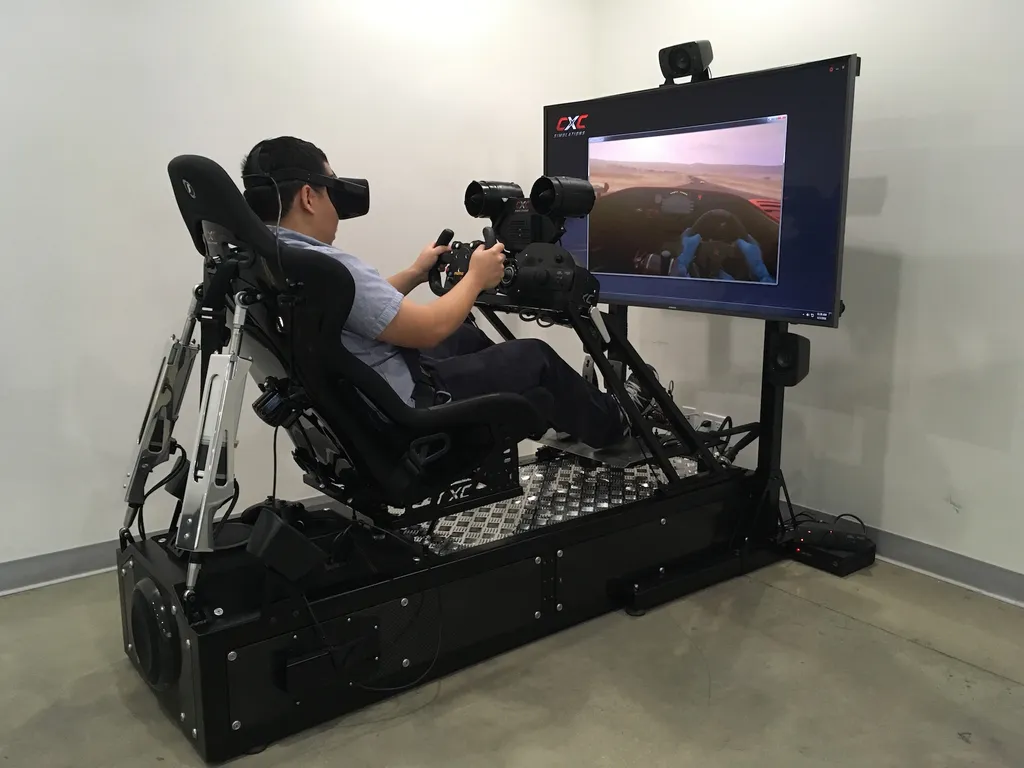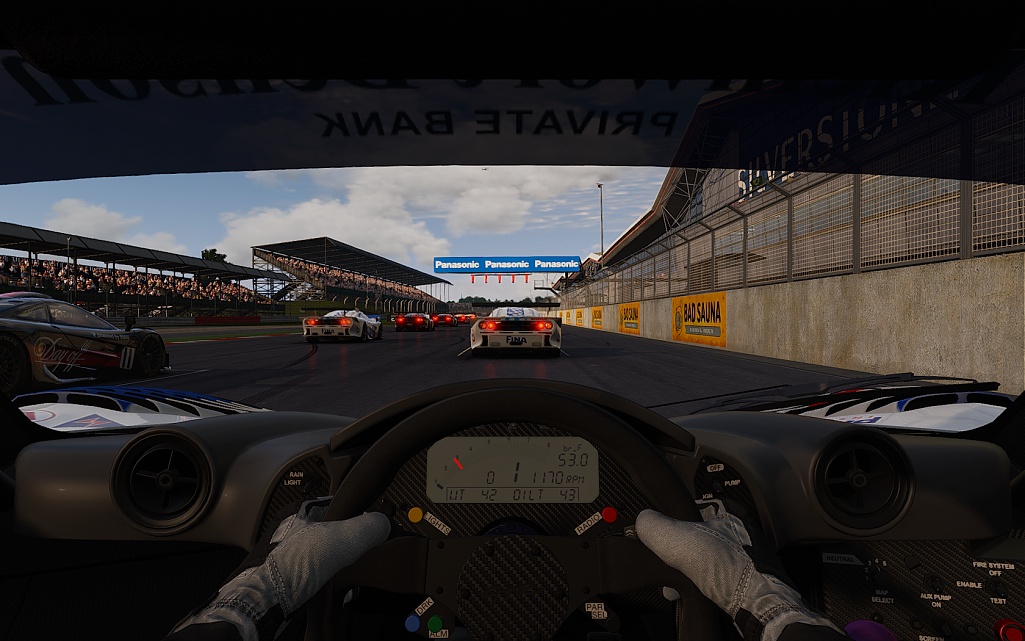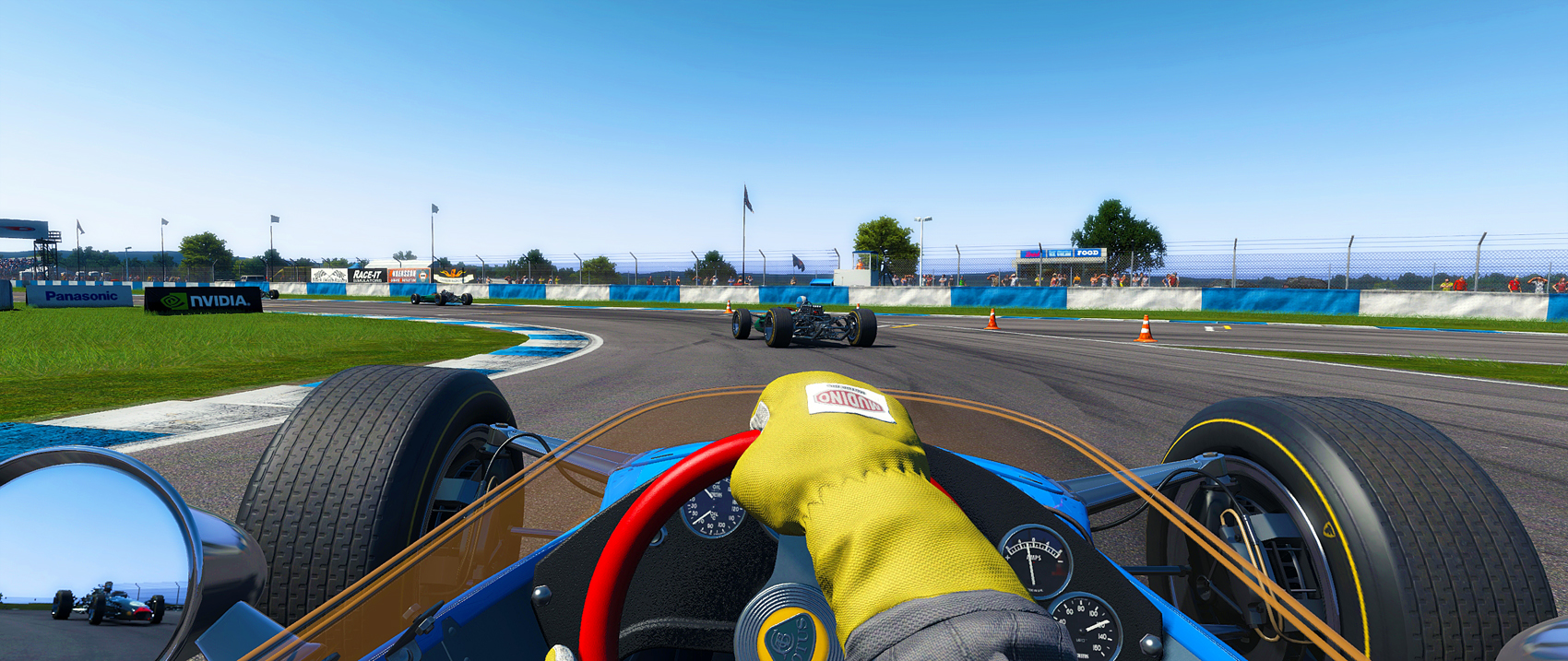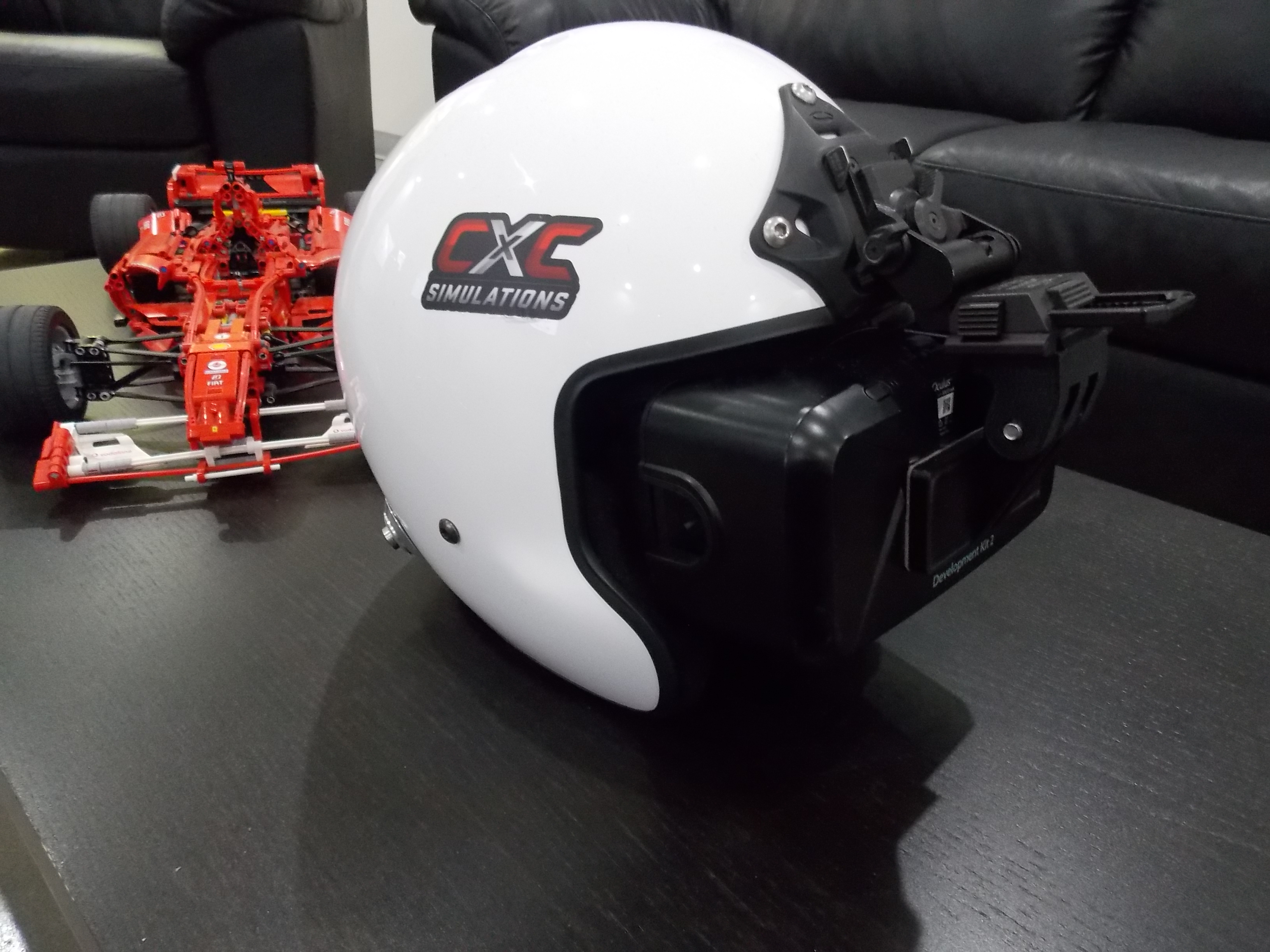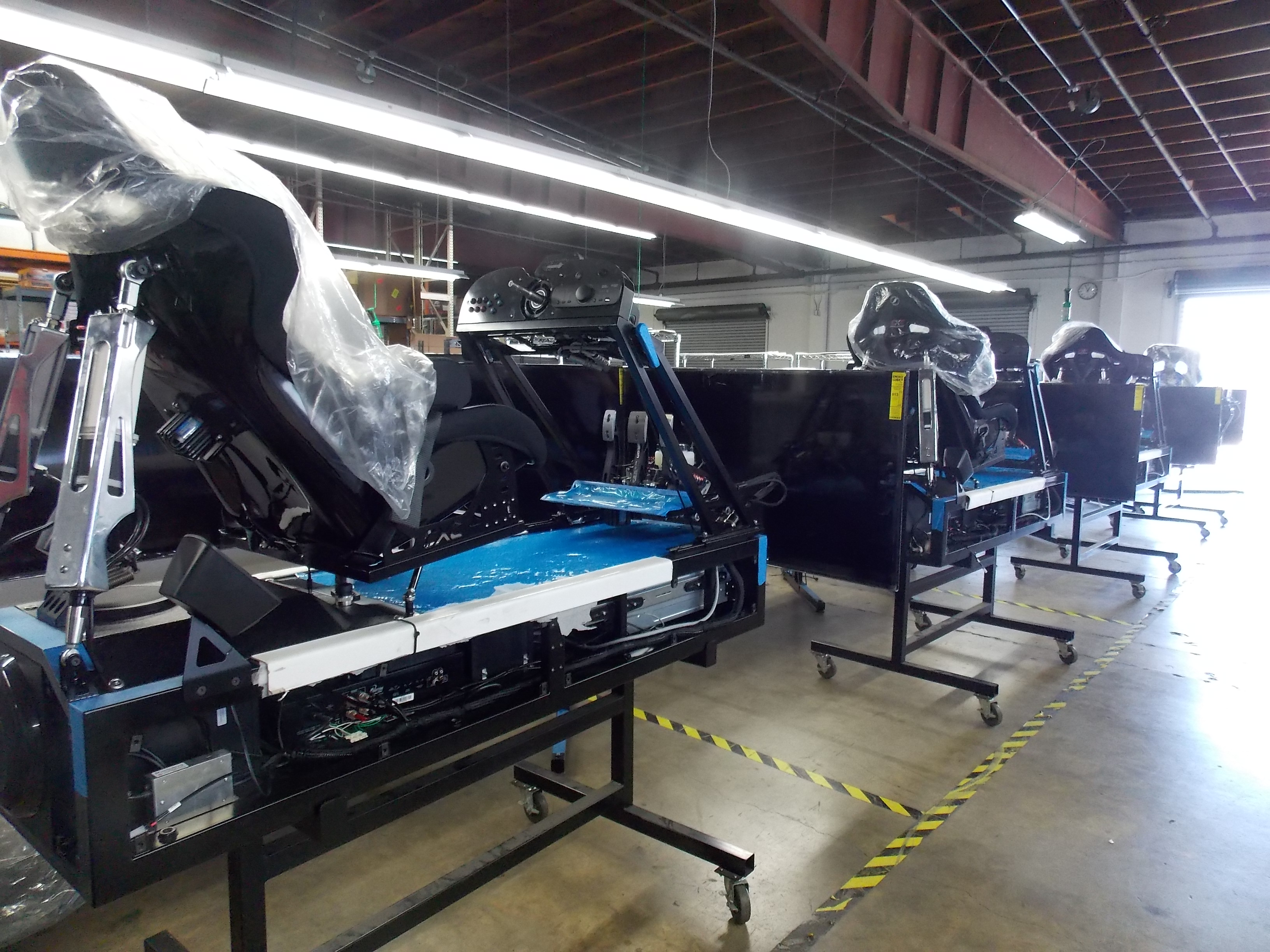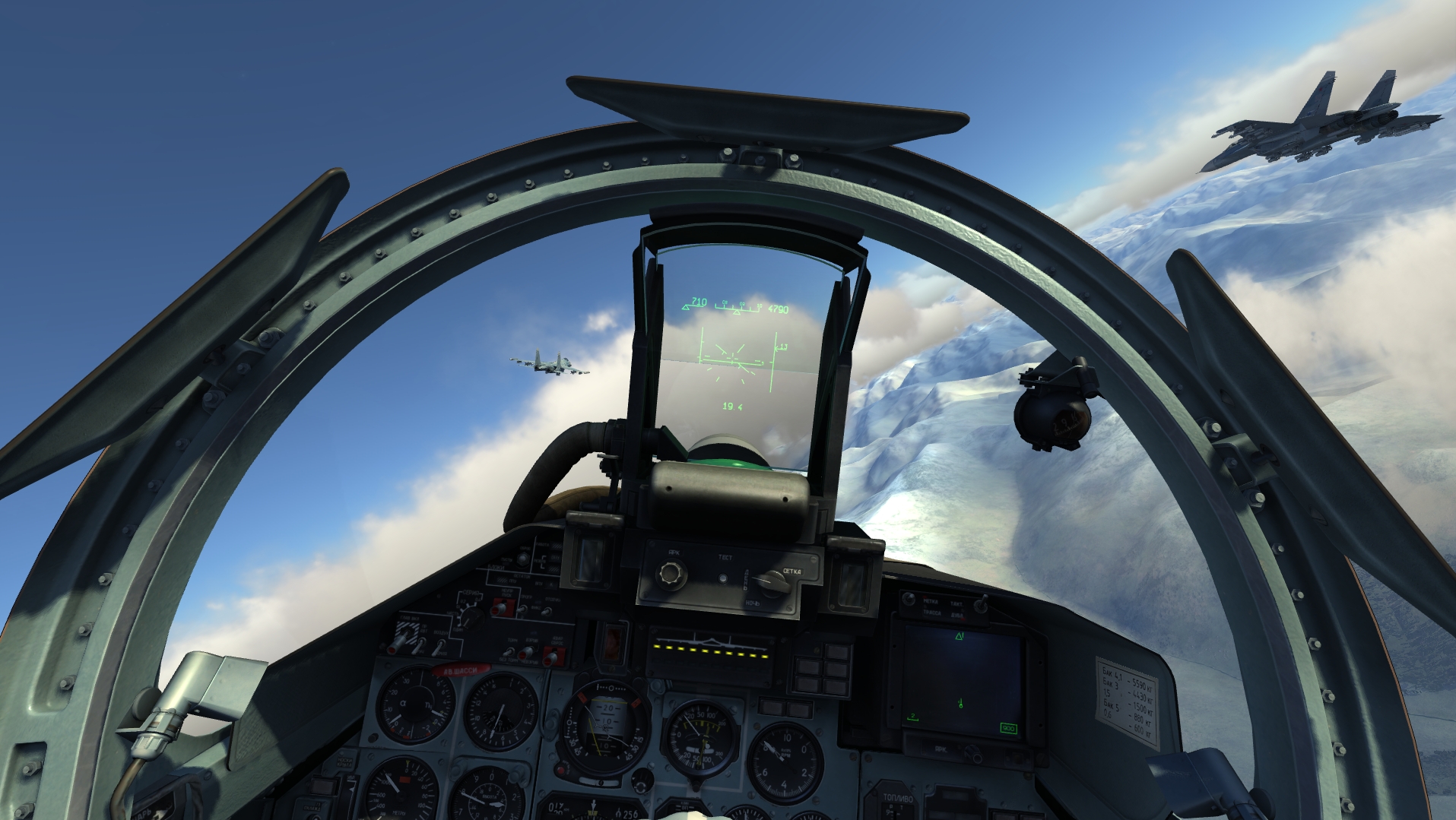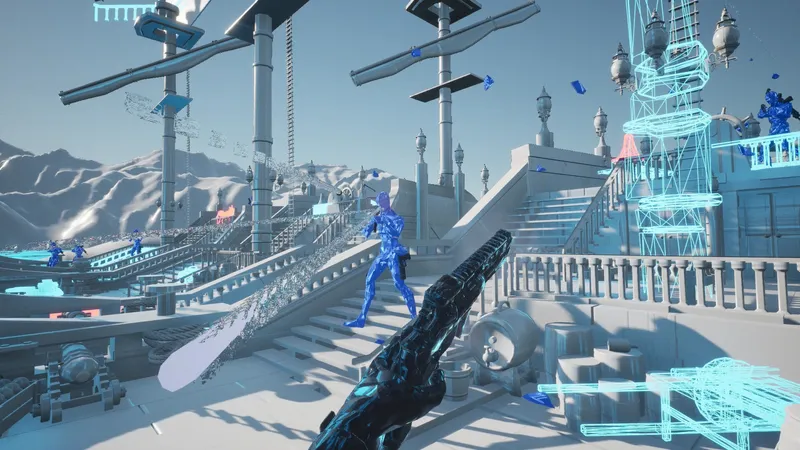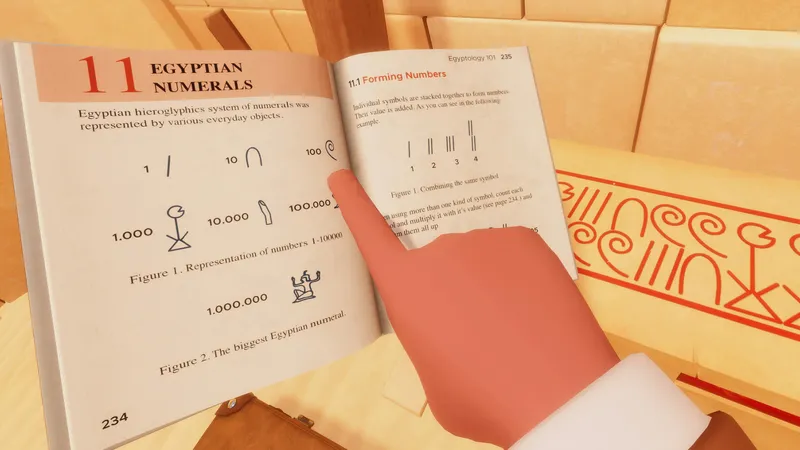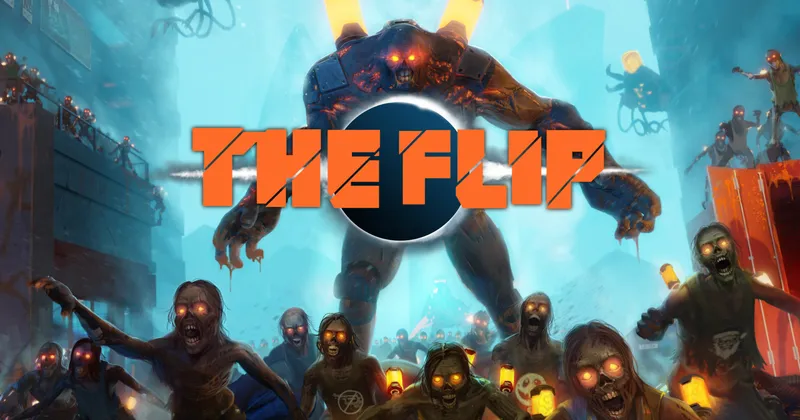My ’96 Chevy Cavalier didn’t prepare me for the foreign dashboard lights or for shifting gears with paddle shifts. Nor did it teach me how to anticipate sharp turns while the sun is in my eyes and competitors are zooming right past me. Luckily, I only crashed a handful of times.
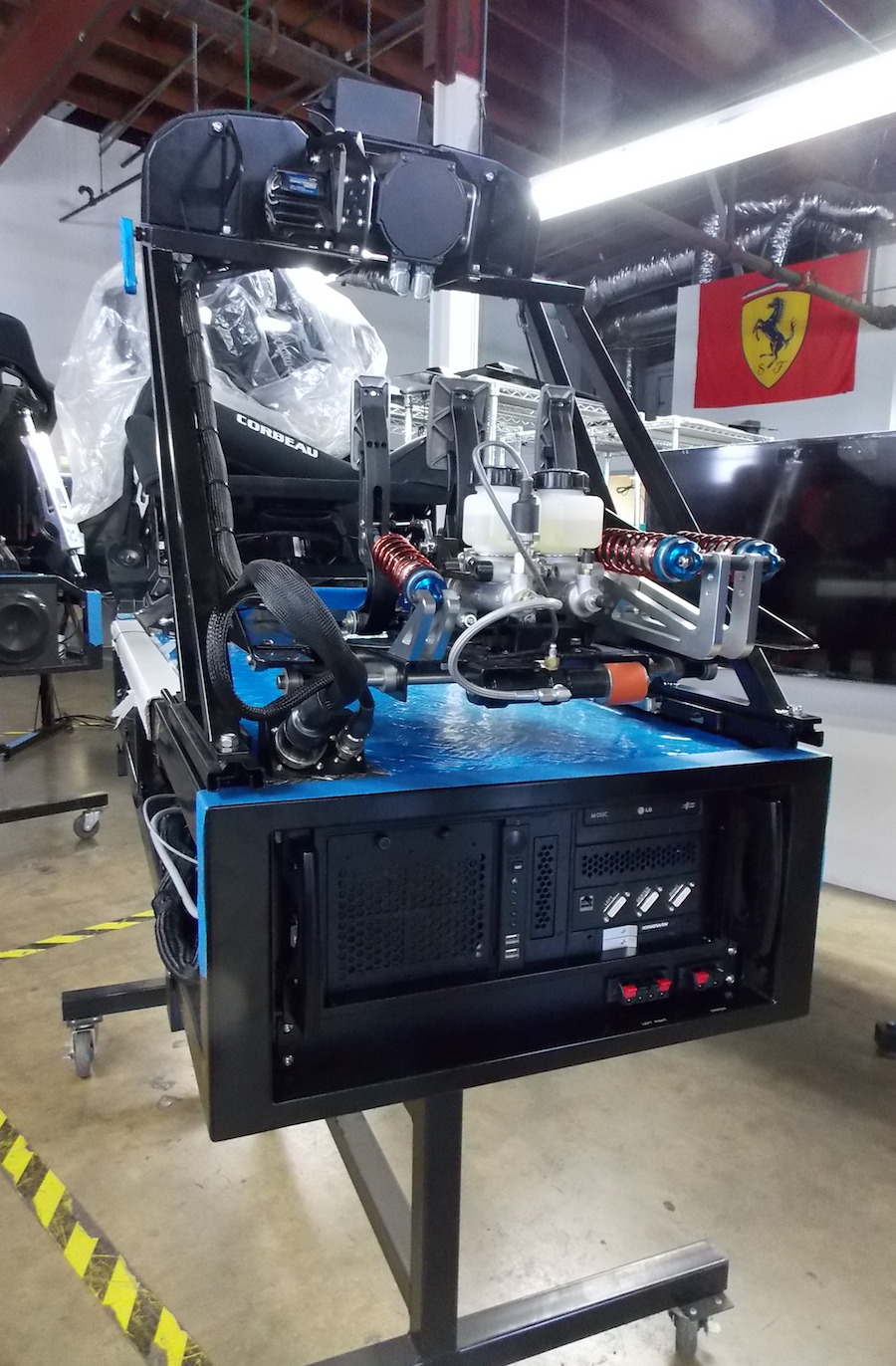 I’m clearly not cut out for racing, virtual or otherwise. But that didn’t stop me from trying out a few cars (and even a fighter jet) while using an Oculus Rift and the Motion Pro II simulator. On its own, CXC Simulation’s Motion Pro II is both a viable training tool for professional racers and a striking showpiece for hardcore enthusiasts. While it’s ideal for racing sims such as iRacing and Project Cars, customers can also use it for flight combat games by swapping out some of its modular components.
I’m clearly not cut out for racing, virtual or otherwise. But that didn’t stop me from trying out a few cars (and even a fighter jet) while using an Oculus Rift and the Motion Pro II simulator. On its own, CXC Simulation’s Motion Pro II is both a viable training tool for professional racers and a striking showpiece for hardcore enthusiasts. While it’s ideal for racing sims such as iRacing and Project Cars, customers can also use it for flight combat games by swapping out some of its modular components.
And with the added immersion from the Rift, CXC is helping race car drivers better prepare for their events — and at a much cheaper cost compared to practicing on a real track. It takes a lot of time and money for drivers to find a race track, haul in their cars, and hire crew members to oversee everything.
So for them, Motion Pro II’s $49,000 price tag (it can go way higher with customization) is a steal. And that’s without the option of Oculus Rift integration, which includes the headset and custom hardware for connecting it to the rack-mounted PC underneath the seat — that will run you an additional $1,650. The machine I used at CXC’s Los Angeles headquarters had all of that plus a pair of fans that simulated wind speeds. The faster I drove in Project Cars, the faster the fans blew in my face.
The Motion Pro II is the ultimate fantasy for racing aficionados. But even for plebs like me, the simulator was undeniably cool. The seat belts tightened up against my body whenever I slammed the brakes really hard, or when I aggressively turned my F-15 with the flight stick (and doing it too much in Digital Combat Simulator World makes your character blackout).
The machines also have a brake pedal system that actually uses hydraulic fluid because, as CXC Simulations president Chris Considine told me, nothing else feels like a hydraulic brake pedal except for the real thing.
Waiting for Consumer VR
The Motion Pro II isn’t for the average consumer, but Considine is fine with that. He’s a former racer who founded CXC Simulations with pro drivers in mind.
“You really feel what’s going on with the car far quicker than you see what’s going on in the car,” he explained. “If you’re about to oversteer — the rear-end starts to slide or drift — you feel that way before you see it. For a race car driver to use [the simulator] as a training tool, we have to have as many of those haptic feelings as possible.”
This was especially noticeable when I drove off-road. The seat rumbled violently as the motion systems, location-based vibrations, 5.1 surround sound, and other features worked together to sell the illusion of hitting the dirt. That physical feedback is why Considine advised me to strap the Rift in tight; otherwise, it would’ve bounced all over the place.
CXC has been waiting to add VR to its simulators for a long time. In the past, its employees experimented with military-grade head-mounted displays. But when Oculus VR launched its crowdfunding campaign in 2012, they were one of the first people to jump in.
“[TV] screens traditionally have had some limitations — not just field of view,” said Considine. “For race car drivers, they’re trying to judge depth and when they can break and how fast they’re going. And all that has to happen naturally…That’s a really big thing you’re missing no matter how big the screen is. So when VR came around, we were early adopters. We were on the first [Oculus Rift] Kickstarter.
“In fact, I was at SIGGRAPH when they were showing the early prototypes because we knew that was going to be huge … to be able to get natural 3D where you can sense where the edge of your car is, or sense how fast you’re going, or where your braking zones end. Just that depth perception is really crucial for drivers. They rely on that all the time.”
Nailing the Details
Internally, CXC began work on incorporating Oculus Rift development kits into its simulators. On the hardware side of things, Considine said they “agonized” over little details like figuring out which adaptors and cables would give the lowest latencies. They devised an easy way for it to plug into the Motion Pro II. Owners of older models have an upgrade path they can use if they want the Rift setup as well (the VR option became available this past May).
The software side of things present a different challenge. CXC can only work with games that already have baked-in VR support. Sometimes, CXC sends a studio its own software development kit. Other times, those companies send their SDKs for CXC to tinker with. The engineers need access to the game’s telemetry data, and from there, they sync it with the Motion Pro II’s actuators and the different feedback systems.
“Our customers don’t really want to spend time adjusting or fine-tuning or learning what works and what doesn’t,” said Considine. “They just want to get in and go because they have other reasons for using it. They’re not the DIY-type of people. [They want] plug-and-play. And turning something as bleeding edge as this into plug-and-play is pretty difficult. … In Project Cars, we spent weeks and weeks and weeks adjusting all the little, tiny, fine adjustments like road scales and FOVs.”
Getting all those little details right — for both hardware and software — is crucial. The experience feels more real when everything works as it should.
“One of the things race car drivers have been telling us a lot recently is as soon as they tried VR, it suddenly made the motion and physical systems even better. It just blended perfectly,” said Considine. “Because they’re so immersed, all the physical sensations felt so much more real because they didn’t have the static reference [from the TVs] around them.”
CXC doesn’t have to worry about production delays like many folks who pre-ordered the Rift. Thanks to a special arrangement with Oculus VR, CXC currently has a shelf full of headsets for its high-end clientele. If you have tens of thousands of dollars lying around, purchasing a Motion Pro II is one way you could bypass Oculus’ infamous shipping issues.
If you’re leaning more toward an HTC Vive, however, CXC can accommodate that as well. Considine told me there’s almost no difference between the two when it comes to the simulators. However, they do have a slightly harder time implementing it because of the Vive’s extra sensors. The machines don’t use the Vive’s motion controllers, either, so it’s more expensive (and wasteful) than working with the Oculus Rift. For now, CXC doesn’t have much use for roomscale VR.
A lot of the company’s customers are interested in retrofitting their older simulators for the Rift. Most would need to upgrade their PC, which can be easily swapped out by sliding it out of the rack and unplugging its harness. One Motion Pro II owner in particular already requested the upgrade: Ed Brown, the chief executive of tequila-maker Patrón and, in his spare time, a professional race car driver. He competes alongside his Extreme Speed Motorsports teammates at prestigious races around the world.
For successful businessmen like Brown, it’s hard to find time to practice while also running an international company. According to Considine, Brown does multi-hour training sessions in his simulator, often in full racing gear. He placed it in a special room in his house where he cranks up the heat, turning his practice time into a mental and physical workout.
The Future of VR Simulators
Considine likes to think CXC played a huge part in legitimizing simulators in the eyes of race car drivers. Now, he hopes to do the same with VR training.
“The racing world and drivers are very skeptical of everything [Laughs]. Especially simulations,” he said.
For now, CXC Simulations is supporting just the Rift and the Vive. But it’s working with other VR companies as well. For example, somewhere in the CXC building is an Oculus DK2 that uses Leap Motion’s hand-tracking technology. Hand-tracking isn’t entirely necessary for driving — it’s more about muscle memory — but it’d be useful for sims like DCS World, where jet fighter cockpits have dozens of switches and buttons to memorize.
“While it is an option now, [VR] may become mandatory in the future. For us, the display system is getting better and better and better, and the pixel density is getting better and better and better,” said Considine. “That’s really advantageous for us … It’s very usable now. But I find most customers want them both: the big triple-screen system plus the Oculus option.
“Maybe in the future we just drop the screens completely. It’s customer driven; it’s what they want. The one downside to the VR experience is that it is a very personal experience. For the customers who really want to involve spectators, it’s pretty difficult [to do that]. Even when you do [have a display], the vision we see on the screen is very bouncy and crazy looking.”
So far, the professional drivers CXC works with love the addition of VR. They forget they’re in the simulator, and say that the Rift helps trigger the same emotions they feel when they’re in an actual race. It helps get their adrenaline going.
“If you are physically, mentally stressed while you’re training, and you get that anxiety, then you’re replicating as much of the real world as possible,” said Considine. “So you can keep yourself there and practice in that realm all the time. That’s powerful.”
—
Article contributed by Giancarlo Valdes. Giancarlo is a freelance writer with work appearing in well-known publications such as GamesBeat, Playboy, and Pocket Gamer. You can follow him on Twitter: @_boogs.

